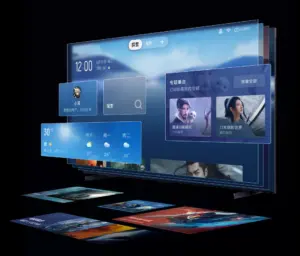We covered the global TV market yesterday with data from DSCC and Counterpoint, and now TrendForce has its own and spin on the market data which might be interesting to know. TrendForce is saying that the increase in TV shipments is good, although slight, and that regional variances and shifting consumer behavior still leave some room for concern. For example, China, traditionally a strong market, saw weaker-than-expected sales due to a sluggish real estate market and evolving viewing habits among younger consumers. North America, on the other hand, maintained steady demand, largely due to aggressive low-priced competition, while Europe benefited from a combination of major sporting events and a low base effect from the previous two years.
TrendForce anticipates continued shipment growth, albeit at a slower pace, as the traditional peak season kicks in during the second half of the year. Rising panel prices and consumer preference for budget-friendly options are going to pressure brands and TrendForce sees companies have already scaled back promotional activities and shifted focus to larger, mid-to-high-end products to mitigate losses. This trend is expected to drive up the average TV size to 55.5 inches this year.
Among the top TV brands, TrendForce sees Samsung Electronics continuing to lead, followed by Hisense, but gives TCL the third place sport over LG Electronics, with Xiaomi rounding out the top five. TCL is seen as closing in on Hisense, bolstered by strong market penetration in Europe and emerging regions. According to TrendForce, TCL’s Q2 2024 shipments surpassed Hisense, highlighting its potential to challenge for second place in overall shipments by the end of the year.
MiniLED TVs are a standout in 2024, with shipments expected to soar by 55% YoY. TCL, Xiaomi, and Hisense have driven this growth by making their advanced TVs more affordable, helping them capture significant market share. This strategy has been effective, as the combined market share of these brands is set to surpass 50%, potentially overtaking Samsung in this segment.
OLED TVs, on the other hand, are seeing a rebound after a tough 2023, with shipments up nearly 16% YoYr. LG Electronics and Samsung are leading this resurgence, thanks to strategic promotional discounts and market expansion efforts, according to the analysis. The view of TrendForce being closer to the Chinese market is less sanguine on the future of OLED TVs than some other analysis. OLED TV remains uncertain because of the pace of cost reductions and because it may be harder for the technology to penetrate the Chinese brands. TCL, for example, is doing pretty well with its own manufacturing strategy and supply chain optimizations on MiniLED, and doesn’t need to change tack on technology.
| TrendForce Data Points | Metric |
| Global TV Shipments 1H24 | 90.717 million units |
| Global YoY Growth 1H24 | 0.80% |
| TV Shipments 2024 Forecast | 195.09 million units |
| TV Shipments 2024 YoY Decline | -0.20% |
| Average TV Size 2024 | 55.5 inches |
| Mini LED TV Shipments Growth 2024 | 55% |
| Mini LED TV Shipments 2024 | 6.35 million units |
| Top 5 Brands 1H24 (in order of rank) | Samsung, Hisense, TCL, LG, Xiaomi |
| Samsung Market Share in MiniLED 2024 | 25% (down 17%) |
| OLED TV Shipments 2024 Growth | 15.90% |
| OLED TV Shipments 2024 | 6.23 million units |
| LG Market Share in OLED TV 2024 | 53.30% |
| Samsung Market Share in OLED TV 2024 | 22.50% |

